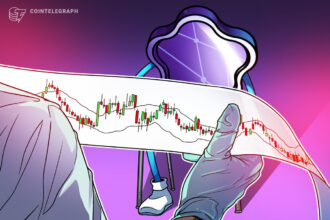Ethereum Celebrates 10-Year Anniversary Amid Renewed Institutional Interest
ETH Hopes to Challenge 2021 All-Time High Amid Decade of Innovations
Click here to read the full timeline: Ethereum’s Ten-Year Journey
Decade of Innovation
Led by co-founder Vitalik Buterin’s 2013 whitepaper, Ethereum evolved from a niche smart contract platform to the world’s leading decentralized finance (DeFi) blockchain. Its TVL recently reached nearly $85 billion, placing Ether as the second-largest cryptocurrency by market capitalization.
Today, 10 years after the project’s conceptualization, renewed institutional momentum is fueling hopes that Ether could reclaim the peak price of $4,891 set in November 2021.
1993-2015: Genesis and Vision
Vitalik Buterin circulated an early version of the Ethereum whitepaper in 2013. After raising $18.3 million in its initial coin offering (ICO), the project officially launched in 2015 as a blockchain for smart contracts.
2015-2016: Birth and Controversy
April 2016 saw The DAO, a decentralized venture capital project built on Ethereum, launch but later became the victim of a massive exploit. Around $60 million was stolen, triggering a critical fork decision.
The developer community split along ideological lines. The majority forked the blockchain to reverse the theft, creating the new Ethereum chain (ETH). The original chain became Ethereum Classic (ETC).
2017-2018: ICO Boom and NFT Hype
Ethereum dominated the 2017 ICO frenzy, surviving its own bubble burst in early 2018 alongside collapsing Bitcoin prices. Its network was also overwhelmed by the rise of CryptoKitties, an early NFT phenomenon driving up gas fees.
Regulatory clampdown on unregistered securities further dented the crypto market. ETH fell from nearly $1,450 ($19,000 for BTC) to around $85 by December 2018.
2019-2020: DeFi Summer and Infrastructure Focus
Marked by a market downturn (the “first crypto winter”), development centered on foundational layers. Projects like MakerDAO, Compound, and Uniswap pioneered DeFi protocols, building permissionless financial primitives. ETH’s TVL crossed the $1 billion threshold for the first time during this period.
2021: NFTs Go Mainstream
Ethereum captured global culture through Non-Fungible Tokens (NFTs). CryptoPunks and Bored Ape Yacht Club achieved astronomical value, attracting celebrities and driving prices, including ETH’s November peak. However, soaring gas fees made basic transactions prohibitively expensive.
2022: Survival and the Merge
In a year dubbed the “crypto winter,” Ethereum endured major market crashes and its own bear market, sinking below $1,000. Although ETH lost ~70% of its value, a key upgrade occurred: The successful “Merge” transitioned the network from energy-intensive proof-of-work (PoW) to efficient proof-of-stake (PoS) in September.
2023: Scaling Through Layer-2
With PoS operational, Layer-2 scaling solutions (like Arbitrum, Optimism, zkSync) gained traction. These rollups processed transactions off-chain while leveraging Ethereum’s security. New “airdrops,” such as Arbitrum’s distribution to early users, intensified speculation. Liquid staking tokens (e.g., stETH) became essential tools for yield-seeking stakers.
2024: Rollup Dominance and ETF Catalyst
2024 saw explosive growth for Ethereum Virtual Machines (EVM) compatible rollups, leading to increased transaction throughput. However, this scaling came with fragmentation—Ethereum’s ecosystem splintered across multiple rollups, often hindering seamless asset transfer (“composability”). A major driver was the approval and launch of Ethereum-based ETFs.
2025: Back to the Base
This year saw a strategic push by Ethereum’s core team to consolidate activity back onto the main chain. Institutional interest surged further with the expansion of approved ETH ETFs, driving net inflows. However, despite this renewed interest, ETH dipped to under $1,500 in April, briefly triggering concerns, though it has since recovered above $3,800.
(Optional: Add related link snippet)












